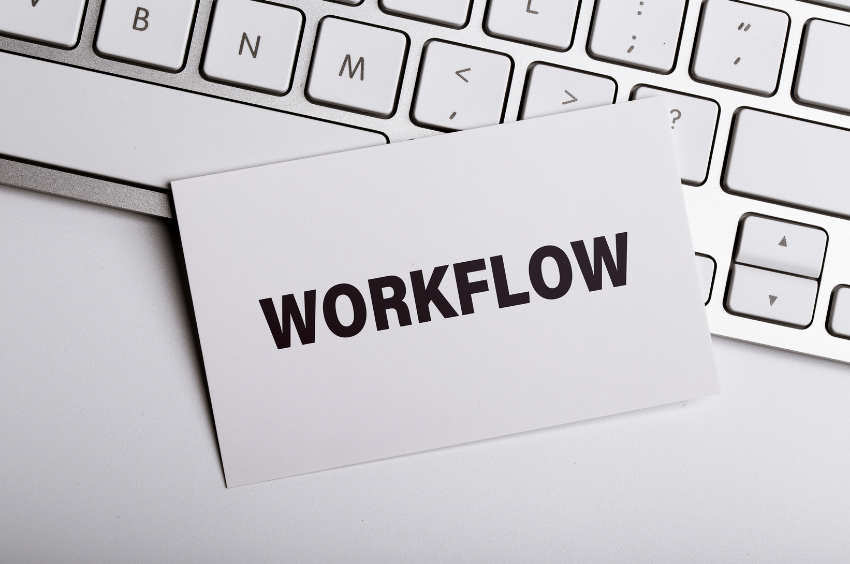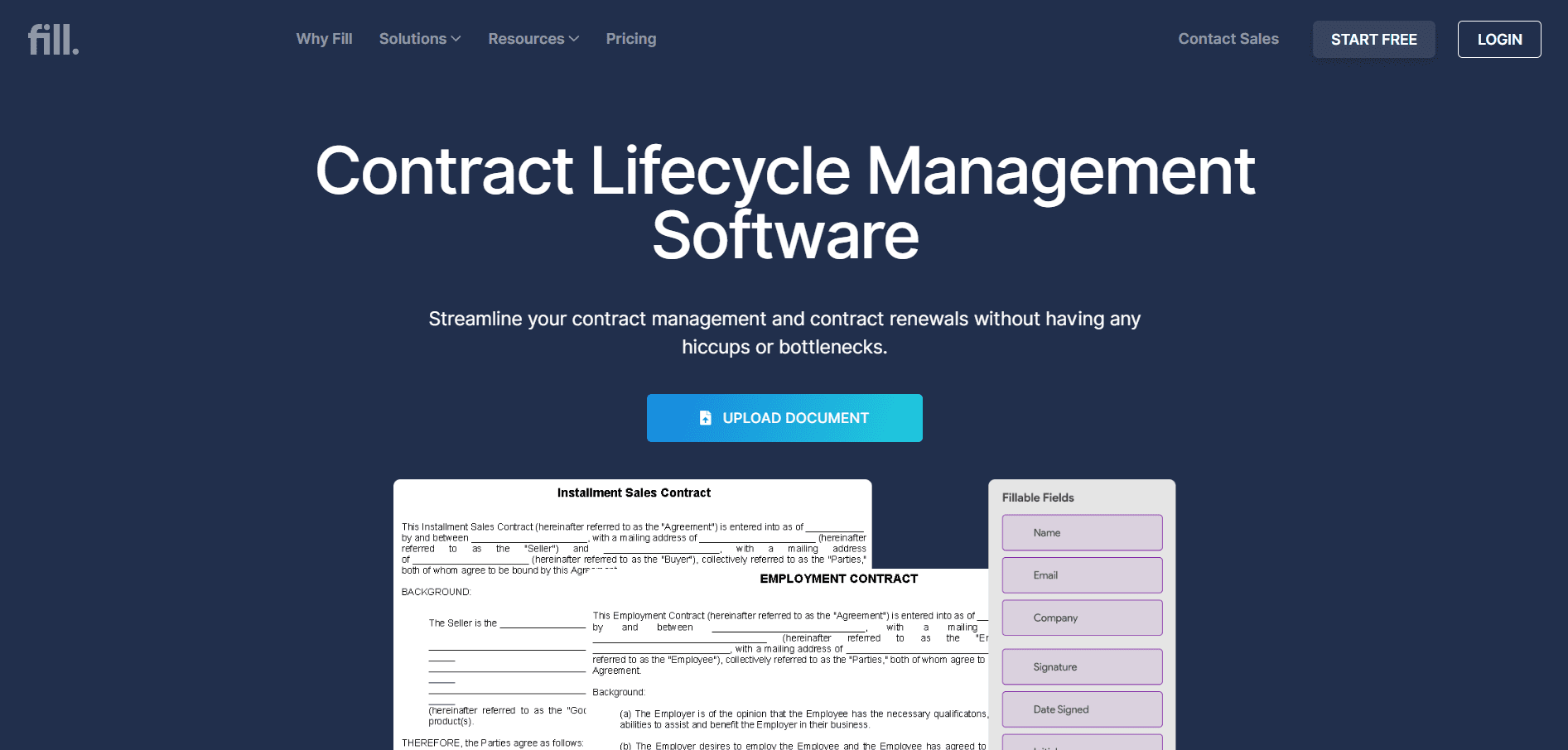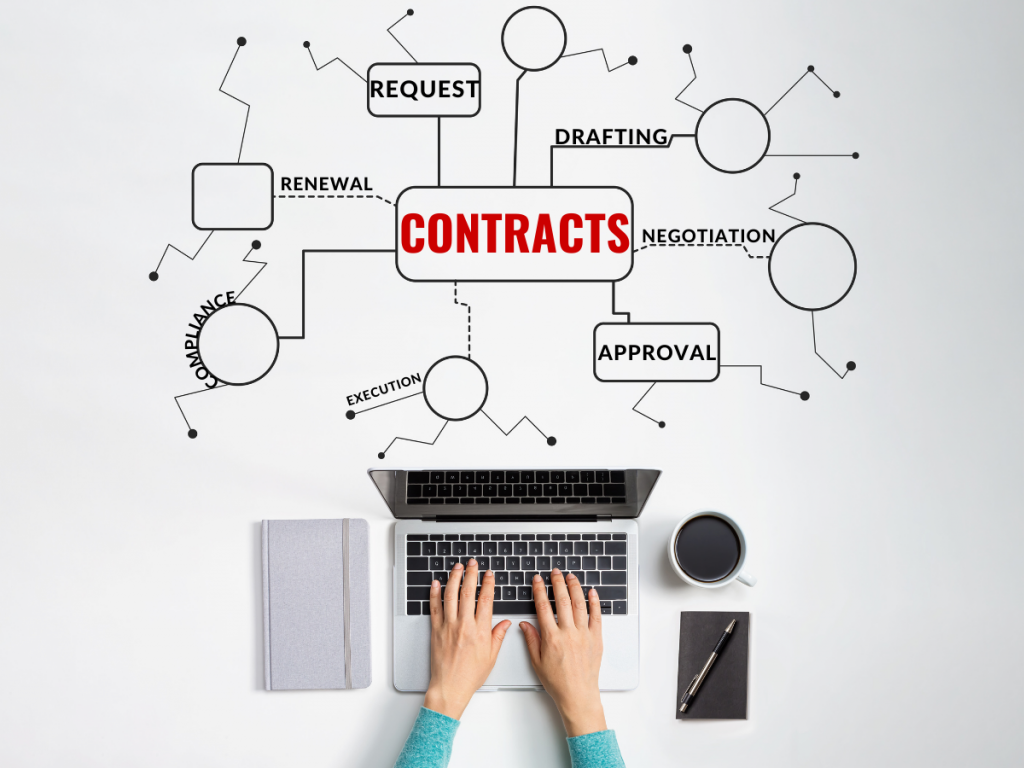A well-structured workflow process is necessary to eliminate redundancies and minimize errors. Companies and businesses also implement workflows to ensure consistency and avoid confusion. The same thing applies to contract workflows. Such a system is necessary to ensure the precise management of contracts, starting from pre-execution to post-execution.
In this post, we’ll walk you through the basics of managing contracts and why improving workflow efficiency is a must, especially if you want to achieve your desired results.
Table of Contents

Empower your business by automating each step of your contract management process. With Fill, you can simplify the complex processes required for contract signing while reducing costs.
What Are Contract Workflows?
In essence, contract workflows are synonymous to contract process management systems. It is an end-to-end process that involves each stage of the contract lifecycle. It also refers to how each company or business implements its lifecycle management to meet the standard industry and regulatory requirements.
Conventionally, contract workflows require manual input, but that has changed due to the development of automated management systems, wherein you can accomplish tasks using machine learning (AI) and pre-defined rules.
To understand this further, you’ll need to familiarize yourself with the three stages of contract management. This way, you will also gain a more accurate insight as to why contract workflows are needed to streamline your business dealings and other transactions.
What Are the Three Stages of Contract Management?
Though there are 7 stages of contract management, we can have 3 major stages as follows:
- Pre-execution. This is where the “intake and request” process takes place. At this stage, you must go through each step of the contract management process that precedes the actual contract execution.
- Execution. At this stage, all assigned parties have agreed and signed the contract, making it legally binding and enforceable.
- Post-execution. This event takes place after the execution stage and usually involves the management of obligations, renewals, amendments, and terminations.

Workflow Efficiency in Contract Management: Essential Tips and Best Practices
Here are some essential tips (and best practices) on how you can efficiently manage and streamline your contract workflows:
Outline tasks and establish roles
Map out your stakeholders. Outline tasks and dynamically assign roles based on what needs to get done. Ensure proper document routing by clearly identifying who gets to do what at each stage of the contract lifecycle. Doing so will not only help prevent delays but will also help establish a clear line of communication among everyone involved.
Embrace modern methods
Turn manual work into automated processes with the help of modern technologies for contract management. With CLM software, you can streamline tasks and eliminate redundancies while maintaining compliance. You can also implement better security measures to further safeguard your documents from unauthorized changes.
Make use of templates
Using templates, you can quickly create contracts and revise agreements without wasting too much time and effort. You can also provide a standardized procedure to avoid inconsistencies. With standardized templates, you can smoothly go through the contract authoring and negotiation phase while meeting everyone’s needs and objectives.
Collect signatures electronically
By leveraging the benefits that e-signatures can offer, you can avoid the lengthy approval process and get your contracts signed quickly without the additional hassle. You can also ensure document integrity as e-signatures can detect tampering using tamper-evident seals and audit logs. With e-signatures, you gain the advantage of setting automated reminders, which increases your chances of closing deals on time. You can also collect signatures remotely, which is way more efficient than asking for wet signatures to be affixed on paper printouts.
See also: 3 Notable Benefits of Electronic Contract Signing
Track and monitor contracts
Knowing the exact status of your contracts enables you to prepare ahead of time. When tracking contracts, time is of utmost importance. Thus, it pays to invest in contract management software that can track the status of your documents in real-time. You can also plan your next move and come up with countermeasures to mitigate the effects of contract failures. You can also set automated reminders to ensure the timely fulfillment of your signature requests, resulting in faster turnaround times and increased revenue.
Integrate CLM into your existing business apps
Integration does wonders, especially if you need to streamline your document processes. With the help of API, you can integrate CLM into your existing business apps and ensure data consistency. This way, you won’t need to manage and execute contracts using a separate app. You can use your existing CRM or DMS software to accomplish this task. It also provides you with a holistic view of your entire business process.

Optimizing Your Contract Process: How Fill Can Help?
Even if you already have an established system for managing contracts, it may not be as efficient as how you perceived it would. You need to optimize your contract process by implementing modern strategies like task automation. With Fill, you can automate and manage tasks quickly without the steep learning curve. Our cloud-based intuitive platform is all you need to fulfill each step of the contract management process. It can streamline your contract workflows and allow you to stay on top of your business dealings.
With Fill, you can get deals signed faster by eliminating the need to do everything manually. You can also depend on our platform to store and safeguard your documents using the highest level of data security.
Thoughts
Improving contract workflows is necessary to overcome the roadblocks that often lead to unsigned agreements and unsuccessful transactions. To do so, you must learn to embrace the modern methods of streamlining processes and be open to the idea of using digital contracts to facilitate flexible signing options. With digital contract signing, you can close deals faster while ensuring the security and privacy of each transaction.
Experience what it’s like to efficiently track, sign, and manage contracts. Sign up for a 7-day free trial with Fill today or click here to book a demo.




